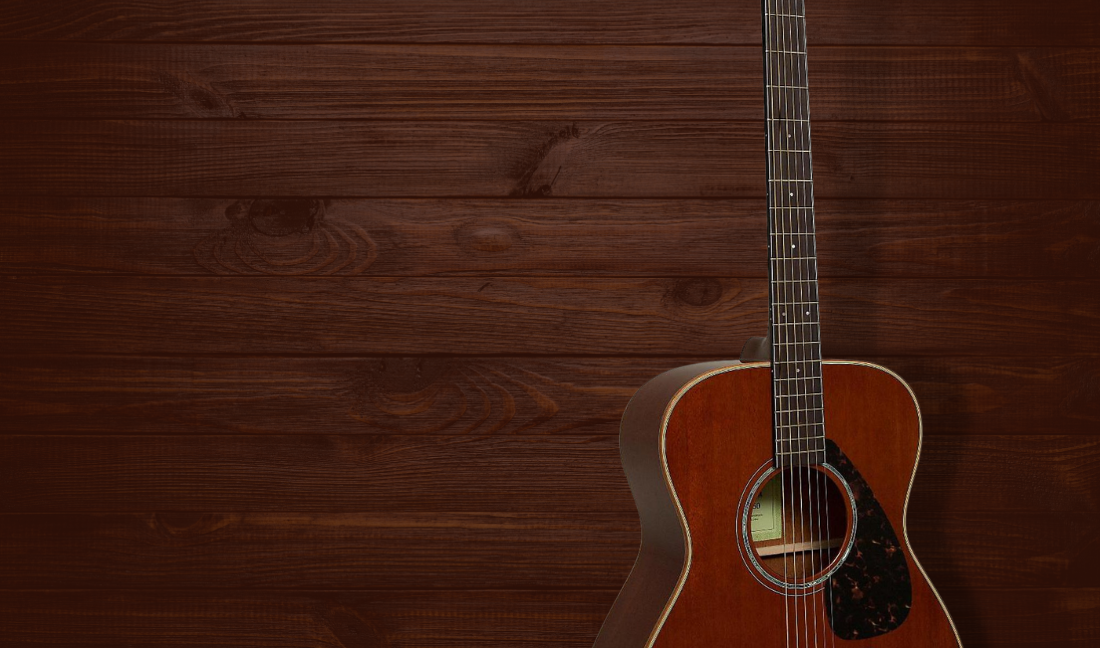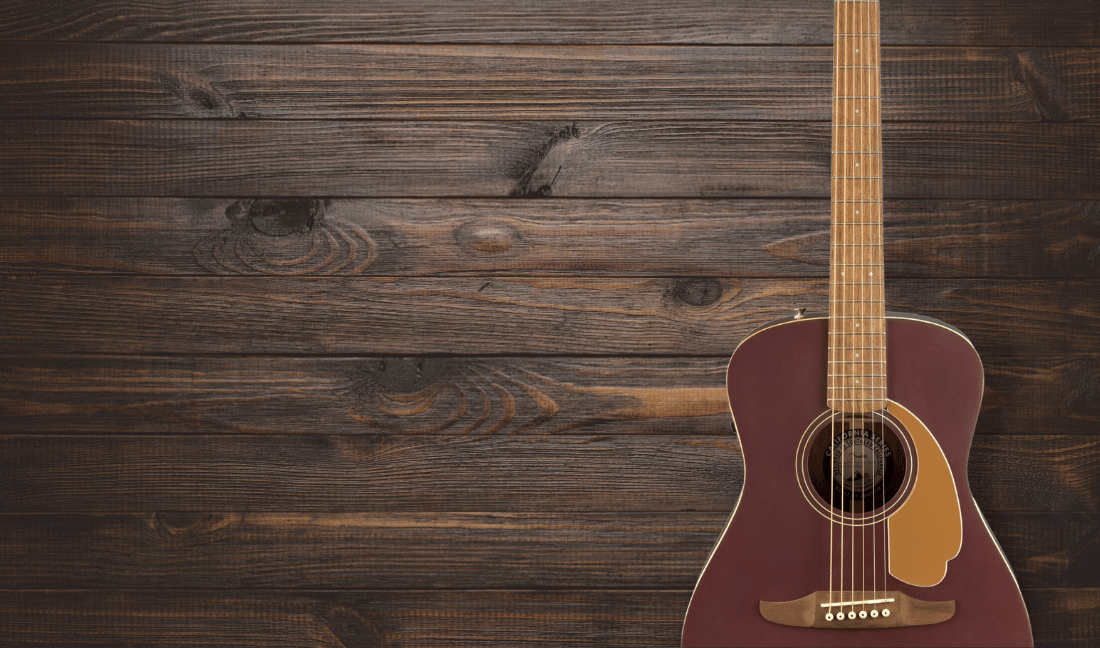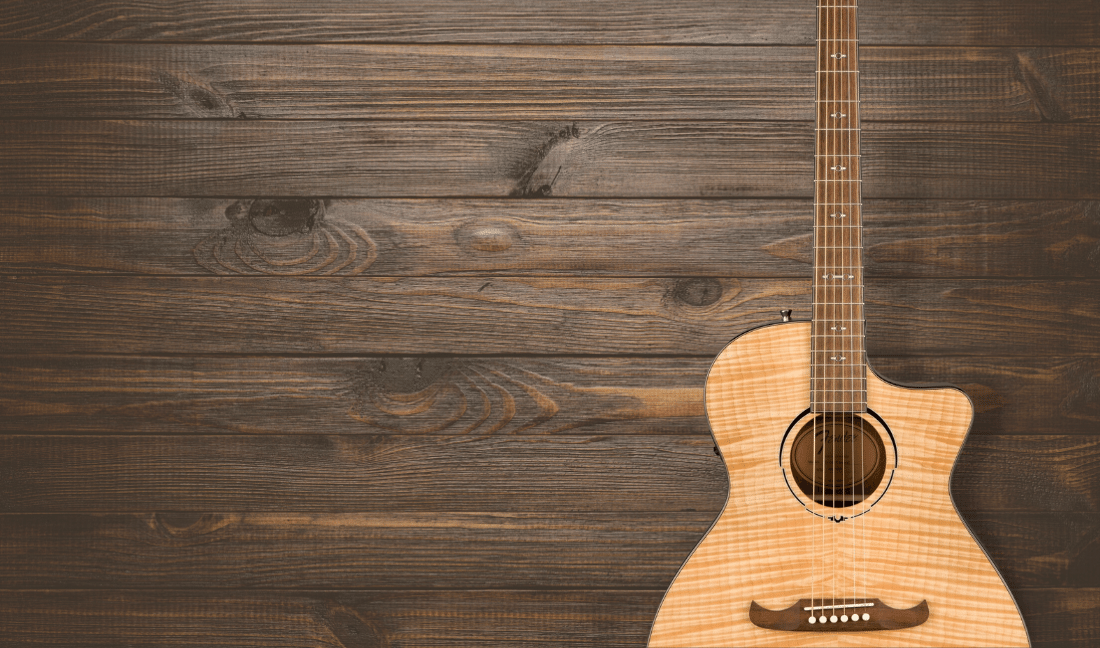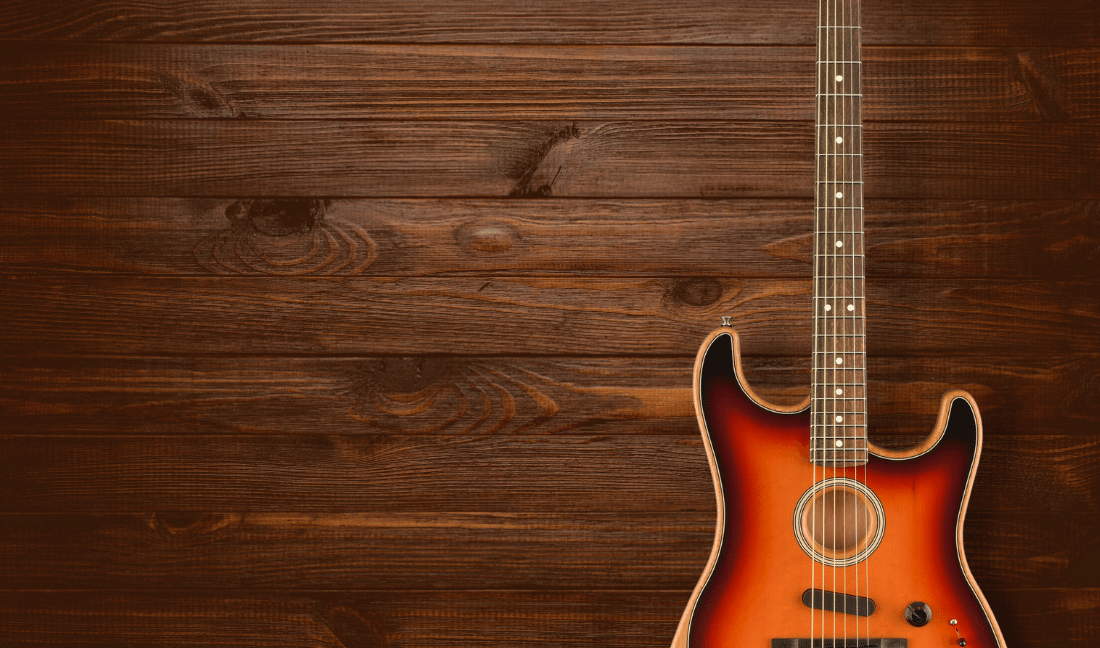The Yamaha FS850 is a great guitar for those who want an acoustic that sounds great and looks good.
It features a non-cutaway body with gloss finish, a top made of mahogany, back and sides made of mahogany, and a 24.9″ scale length.
You can purchase this guitar in many different stores, some of them include:
We may earn commissions from these links at no additional cost to you
In this post, we’ll examine the features, sound, and playability of the Yamaha FS850 acoustic guitar.
Each guitar feature offers something different in regards to the sound and playability of the instrument; we’ll also help you understand what those differences are.
Table of Contents
Summary
Here’s a very quick summary of the Yamaha FS850’s performance.
It’s important to keep in mind that the score and rating is just our opinion, it might not match with yours.
Hardware
The guitar’s hardware refers to all of the metal and plastic components that make up the instrument.
These include but are not limited to:
- Tuning machines
- Pickguard
- Bridge
- Strings
- Strap buttons
- Pickups
- Tailpiece
- Control knobs
Usually, the term “hardware” tends to give the sense of just being used in reference to electric guitars, but it can apply to acoustic guitars as well.
When buying a guitar based on its hardware, be sure it’s of decent quality and will last a long time.
Lower-quality guitars, for example, frequently have plastic saddles on the bridge, which can degrade the instrument’s tone and intonation while also making it more difficult to tune.
Metal pieces should not rust or tarnish, and they should appear sturdy and durable in order to avoid being damaged.
Good hardware is essential to a good-sounding and playable guitar, and there are a couple of things that a manufacturer can do to make it right for us guitarists.
Let’s investigate further!
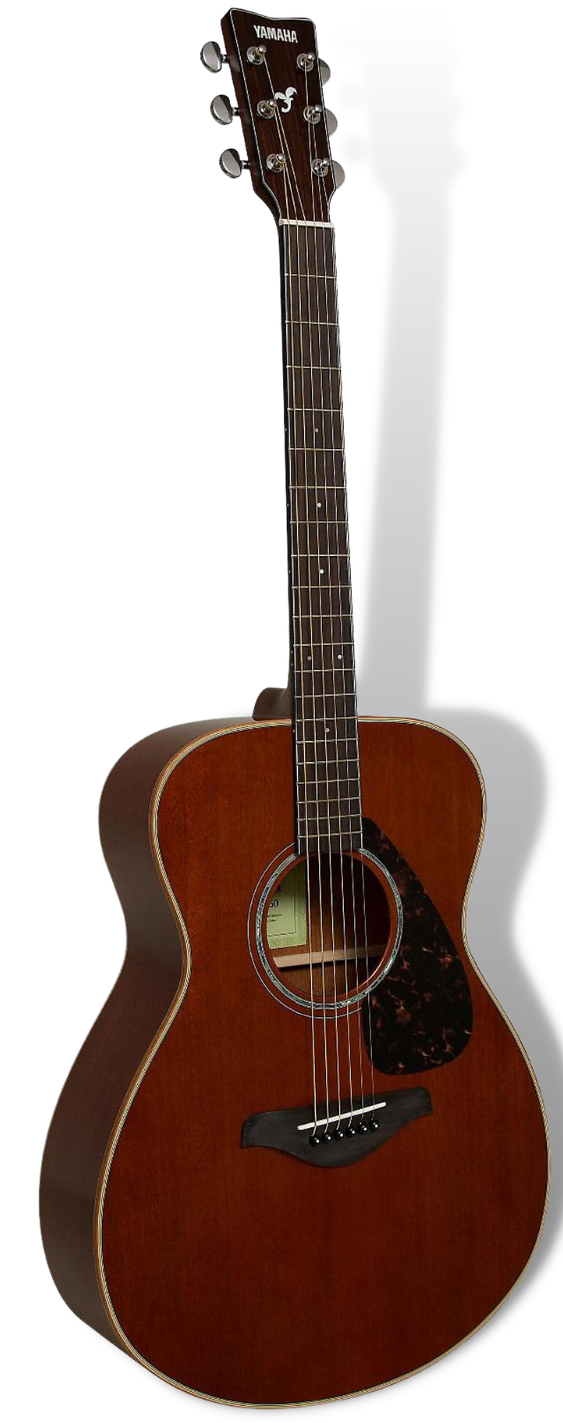
– Tuning Machines
The tuning machines on this Yamaha FS850 are die cast, made of chrome, and feature a classic solid surface design.
- Material: Chrome
- Design: Classic solid surface
One of the most significant aspects of any guitar’s hardware is the tuning machines (or “tuners”).
They’re responsible for keeping the strings tight so they can vibrate properly and generate the right pitch.
Poor-quality tuning machines can cause your guitar to quickly fall out of tune and be tough to stay in tune.
They can also make changing the strings more hard, as well as making playing the guitar more difficult in general.
Must Remember:
Good tuning machines are composed of durable, long-lasting materials and operate with accuracy and precision.
You should look for materials that are less susceptible to rust, such as nickel-plated steel or stainless steel.
These materials are also less likely to tarnish, so your guitar will maintain its appearance for a longer period of time.
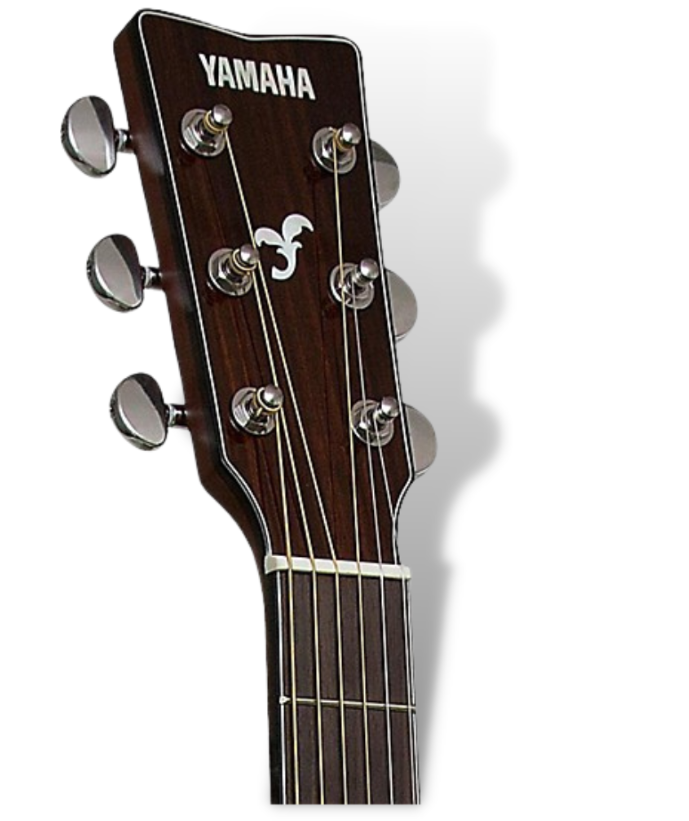
– Pickguard
The Yamaha FS850 has a black pickguard with a red tortoise design.
- Color: Black
- Design: Red tortoise
The pickguard is a little piece of plastic or metal that is positioned near the strings on the body of the guitar.
Its purpose is to protect the finish of the guitar from being scratched by the pick as you play.
Most pickguards are constructed of plastic or metal, in some cases, even carbon fiber, and there are a variety of styles to choose from.
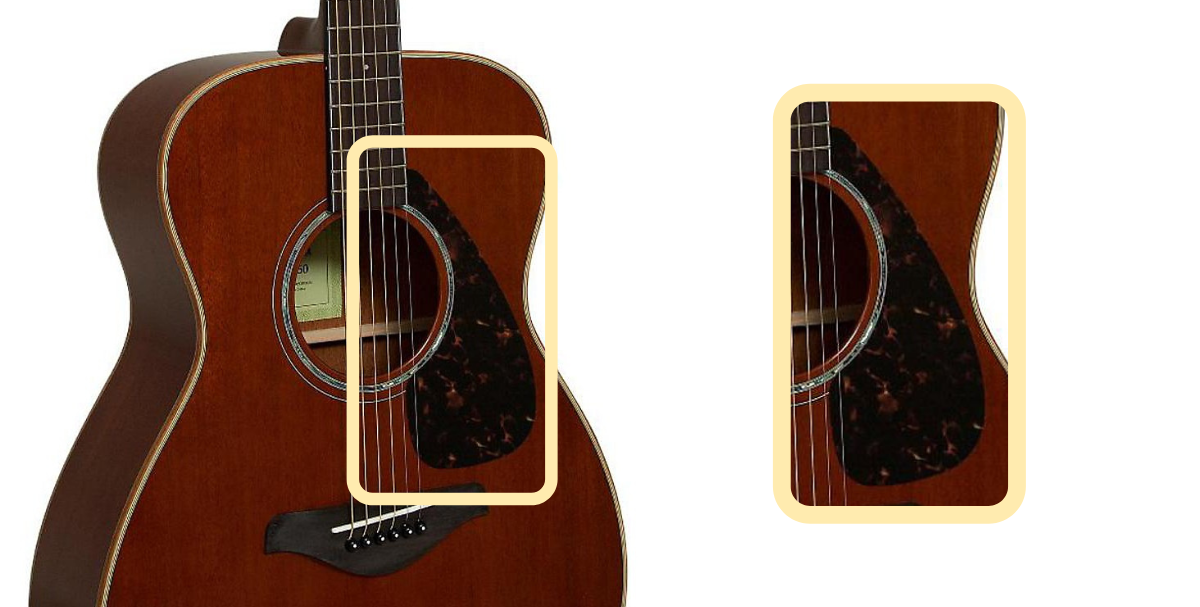
When choosing a pickguard, it is important to consider both its durability and its ability to protect the guitar body from scratches.
It also needs to be big enough and in the right spot to actually protect the guitar body from being scratched by the player’s pick.
As for aesthetics and looks, the pickguard should also complement the overall look of the guitar.
It shouldn’t be too noticeable, but it shouldn’t be so small or low-quality that it seems to be out of place either.
– Strap Buttons
For some reason, the Yamaha FS850 only comes with one strap button, so you’d have to install the second one if you want.
- Material: Chrome
- Position: Bottom
- Design: Classic
Strap buttons is what we call the little metal buttons installed on the guitar’s body that are used to connect a strap to the instrument.
Most guitars will have two strap buttons, one on each side of the body.
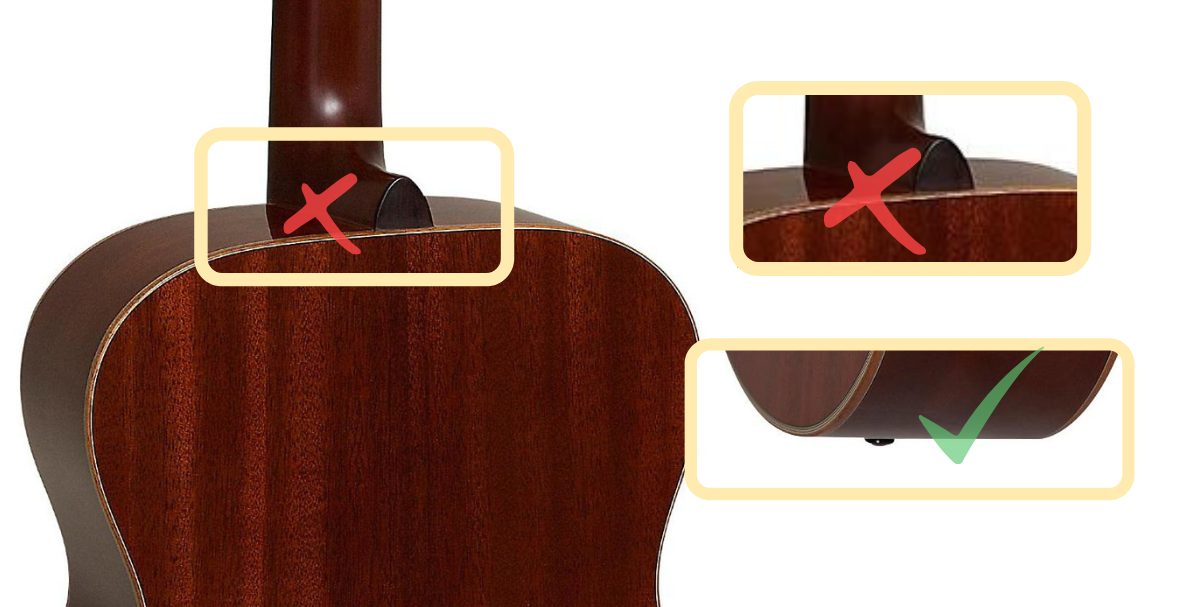
Metal strap buttons should be durable and sturdy so that they do not come loose over time.
Even though for most people, whether the strap buttons are good or not won’t be a deal-breaker for them, it’s still something to keep in mind.
Body
The neck, bridge, and strings are all joined to the guitar’s body, which is the most important section of the instrument.
This is where you’ll notice a hole (the “soundhole”) through which sound can resonate from within the instrument.
The majority of guitars have a wooden body, although others have carbon fiber, metal, or plastic bodies (less usual).
– Wood
If you’re looking for a specific tone, have in mind the type of wood utilized for the body since this will impact how the guitar sounds.
When it comes to the Yamaha FS850, it has a mahogany top with a mahogany back and mahogany sides.
– Finish
The final layer of protection for the wood of the guitar body is the body finish.
When it comes to this guitar in specific, it has a gloss finish.
It’s what gives the guitar its luster and shine, and also protects the wood from scratches, dents, and other scratches.
You’ll come across a variety of finishes, including the following:
- Polyurethane
- Nitrocellulose Lacquer
- Polyester
Nitrocellulose Lacquer is considered to be the best type of finish, but it’s also the most expensive.
It’s a durable finish that can be buffed to a high shine, and it’s also relatively easy to repair if it’s damaged.
Polyurethane is a cheaper alternative that’s almost as good, and Polyester is the cheapest option but it doesn’t provide as much protection.
Among these categories, there are subcategories as well, such as:
- Gloss finishes: High shine and they’re very reflective.
- Matte finishes: Have a lower shine and they’re not very reflective.
- Satin finishes: Somewhere in-between gloss and matte, they have a moderate shine and they’re somewhat reflective.
– Colors Available
The color of a guitar’s body is never an important factor on its overall sound.
It can, however, affect the instrument’s appearance and feel.
Some individuals like a certain color guitar because it complements their aesthetic or because it’s easier to see in low light conditions.
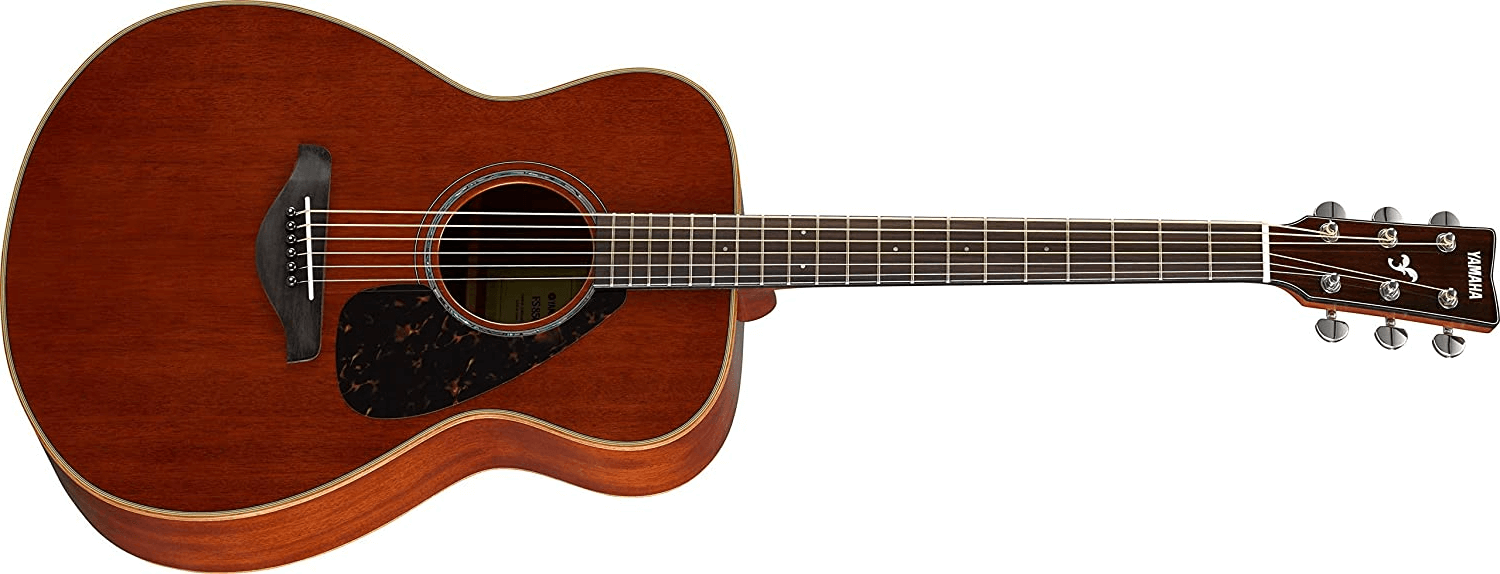
Some of the most popular colors for guitar bodies are:
- Natural: This is the color of wood that hasn’t been stained or painted.
- Black: Black is a popular color for metal-style guitars.
- Sunburst: Sunburst is a combination of light and dark colors, usually red, yellow, and brown.
– Bridge, Saddle, and Pins
The Yamaha FS850 has a standard pin bridge with black-colored plastic pins and a saddle made of urea.
Each one of these components plays an important role in how the guitar sounds and feels.
For example, the bridge is responsible for transferring the vibrations of the strings to the body of the guitar.
The saddle, which is often composed of plastic or bone, is where the strings rest.
And the pins are what hold the strings in place.

There are several types of bridges, each with its own set of benefits and drawbacks.
There are three primary types of bridges used on acoustic guitars:
- Pin bridges (standard)
- Pinless bridges
- Classical bridge
The most frequent form of bridge is the pin bridge, which is also the simplest to replace.
However, they can be more difficult to intonate, which involves getting the strings in a precise position and tuning them.
Pinless bridges are less common, but they’re easy to intonate too.
They also have the benefit of not requiring any pins, which may be difficult to keep track of.
Finally, classical guitar bridges are only found for the most part on classical guitars.
They are very similar in design to most other bridges, but the main distinction is that they have no pins and instead consist of a saddle and a wooden block with a hole for each string.
This hole is used to secure the string, giving the guitar a much cleaner appearance.
Now, the sort of saddle you have is also crucial; plastic saddles are the least expensive and simplest to buy, but they do not last as long as bone saddles.
The cost of bone saddles is more, but they are also more durable.
As for the bridge pins, there are three main types:
- Plastic bridge pins
- Steel bridge pins
- Brass bridge pins
Plastic bridge pins are the cheapest and easiest to find, but they’re also the least durable.
Steel bridge pins are more expensive, but they’re also more durable.
Brass bridge pins are the most expensive, but they’re also the most durable.
Neck
When it comes to the Yamaha FS850, its neck is made of nato and has a C shape with an adjustable truss rod.
The neck is the thin, long piece of the guitar that runs from the body to the headstock and is usually constructed of wood.
Because different woods have distinct qualities that influence how the vibrations created by the strings behave, the type of wood chosen for the neck can alter the guitar’s playability and sound.
The most common type of neck is the bolt-on neck, which is screwed or bolted onto the body of the guitar.
Another popular type is the set-neck, which is glued to the body.
Guitar necks have a few important parts, which include: the fretboard, the frets, the nut, and the truss rod.
Fretboard
The fretboard is the part of the guitar’s neck where your fingers make contact and press against the strings.
It is often made out of wood, although it may also be made of other materials like as carbon fiber, plastic, or even metal.
The Yamaha FS850 has a fretboard made of rosewood with pearloid dots inlays:

Despite the fact that this has traditionally been a point of controversy, it is widely accepted that the type of wood used for the fretboard might have a small impact on the sound of the guitar.
Maple, in particular, is a popular wood for electric guitars because it produces a farily bright tone.
Rosewood is another popular choice, and it’s often used on acoustic guitars because it gives the instrument a warm and full sound.
Ebony is another popular choice, and it’s frequently used on guitars meant to have a very bright, clear sound.
There are many different types of fretboards available, each with its own advantages and disadvantages.
The type of fretboard you pick is ultimately up to you and what you’re looking for in a guitar; the tone will not change dramatically, but the feel might.

Brand Info
Yamaha is another one of the world’s leading guitar brands, and they’ve been in business since 1887.
They’re known for their high-quality acoustic guitars, but they also make electric guitars, basses, and other stringed instruments.
Yamaha guitars are used by some of the most famous musicians in the world.
The company offers a wide range of different models to suit every budget and every playing style and is a great choice for both beginners and experienced players alike.
In terms of quality, Yamaha is definitely up there with the best of them, they use only the finest materials and craftsmanship to produce their instruments.
One of the things that set Yamaha apart from other guitar brands is its commitment to innovation.
They’re always looking for new ways to improve their products and they have a team of dedicated engineers who are constantly working on new designs and concepts.

Videos
For those of you who want to get a more in-depth look at this guitar, we’ve included some videos below.
The first video is a demo showing off how it sounds and looks.
While the second video is a review that goes over some of its features and specs.
Demo
Review
Specifications
A guitar’s specifications can tell you a lot about the instrument, and they can be helpful when you’re trying to decide between different models.
Below, we’ve included the specifications for the Yamaha FS850:
– General
| Brand | Yamaha |
| Model | FS850 |
| Type | Acoustic |
| Size | Full Size |
| Colors | Natural mahogany |
| Number of Strings | 6 |
| Hardware Plating | Chrome |
| Tuning Machines | Die Cast |
| Electro-acoustic | No |
| Built-in Tuner | Not applicable |
– Body
| Body Style | Concert |
| Cutaway | No |
| Solid Top | Yes |
| Top Material | Mahogany |
| Back Material | Mahogany |
| Sides Material | Mahogany |
| Finish Type | Gloss |
| Pickguard | Yes |
| Pickguard Design | Red tortoise |
| Strap Buttons | Yes |
| Strap Buttons Position | Bottom |
| Strap Buttons Design | Classic |
– Neck
| Neck Material | Nato |
| Neck Shape | C |
| Scale Length | 24.9″ |
| Truss Rod | Adjustable |
– Fretboard
| Fretboard Material | Rosewood |
| Fingerboard Inlay | Pearloid dots |
| Number of Frets | 20 |
– Bridge, nut, saddle, pins
| Bridge Design | Standard pin bridge |
| Pin Color | Black |
| Pin Material | Plastic |
| Bridge Material | Rosewood |
| Saddle Material | Urea |
| Nut Material | Urea |
| Nut Width | 1.69″ |
Please note that some brands might change the type of materials that they use on their guitars.
This can be because of new regulations and laws that come and go throughout the years.
If you see a mistake in any of these specifications, please let us know and we’ll correct it.
You can reach out to us via our email: [email protected]
I also encourage you to check out our other guitar reviews if you’re looking for something specific that you might have not found here with this guitar.
There are a lot of great guitars out there, and it can be tough to choose the right one sometimes.
We have reviews on electric guitars, acoustic guitars, bass guitars, effects pedals, and more.
No matter what your budget is, or what type of guitar you’re looking for, we should be able to help you find the perfect one for you.

Born and raised in Florida! I’ve been playing guitars for the past 5 years. Love to learn, and I’m always striving to achieve greater heights in music. Currently have a Fender Stratocaster as my main guitar.

